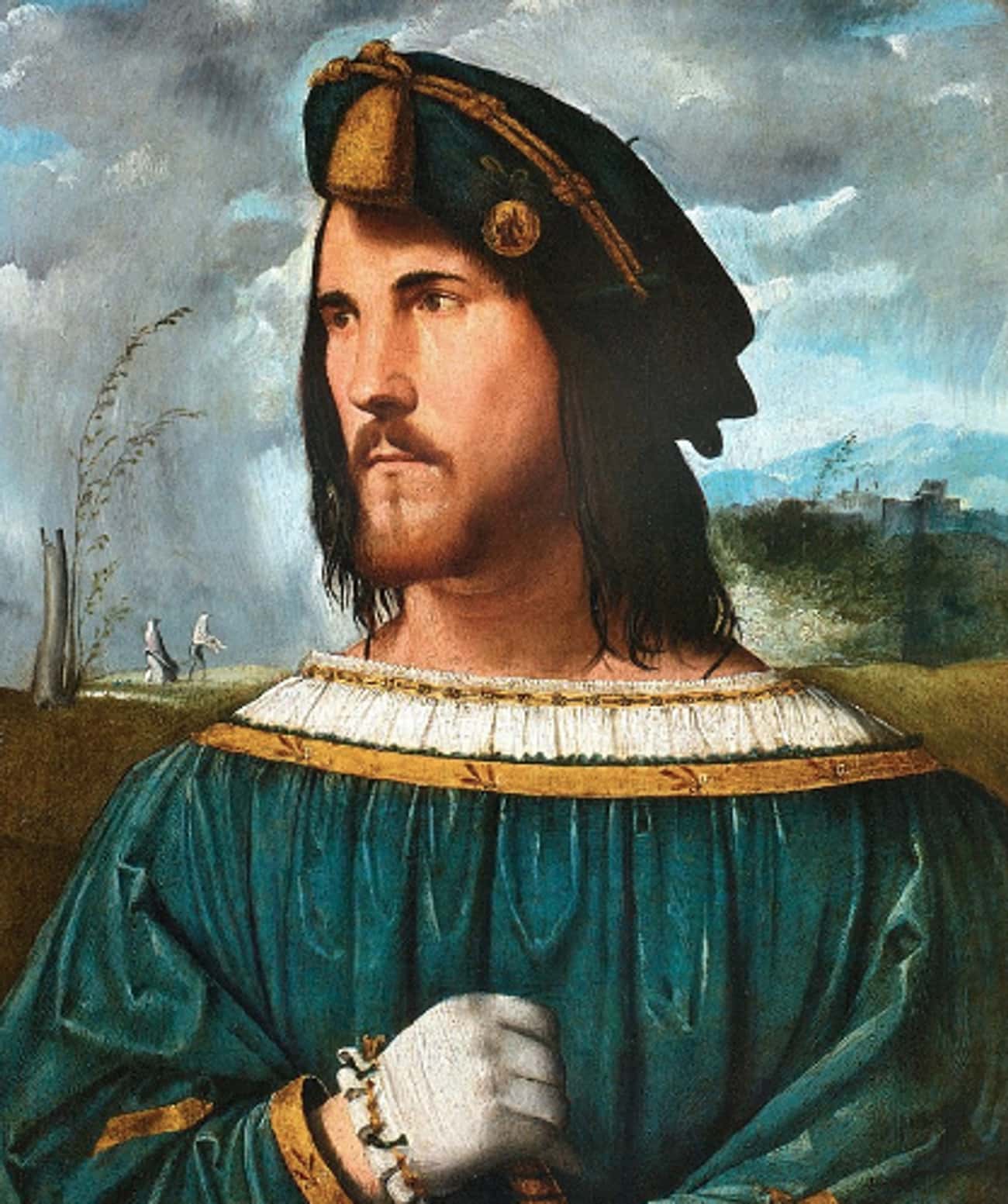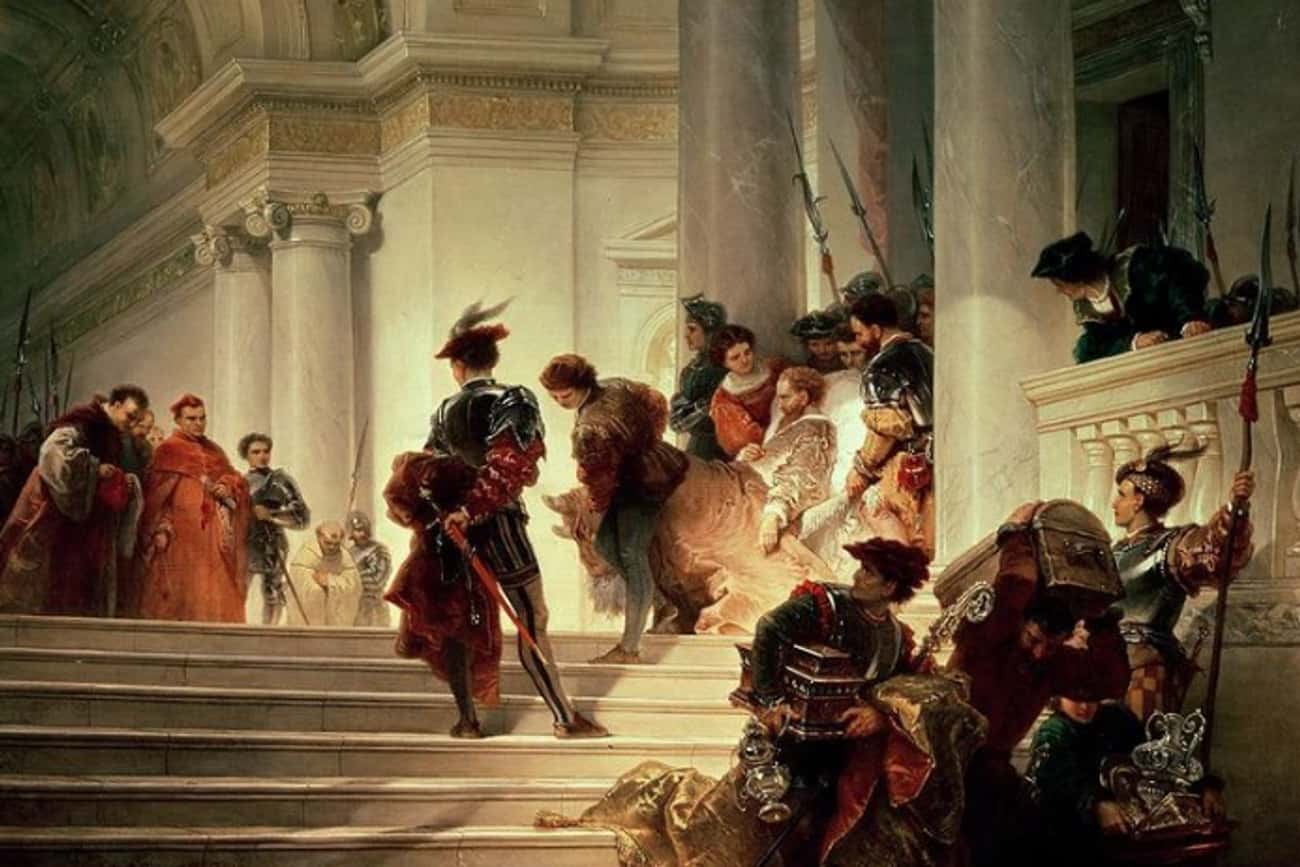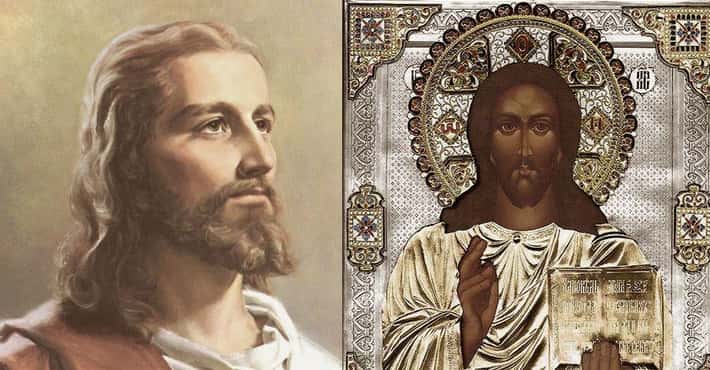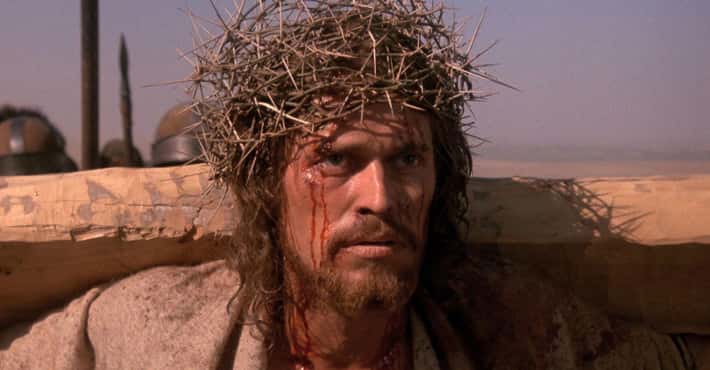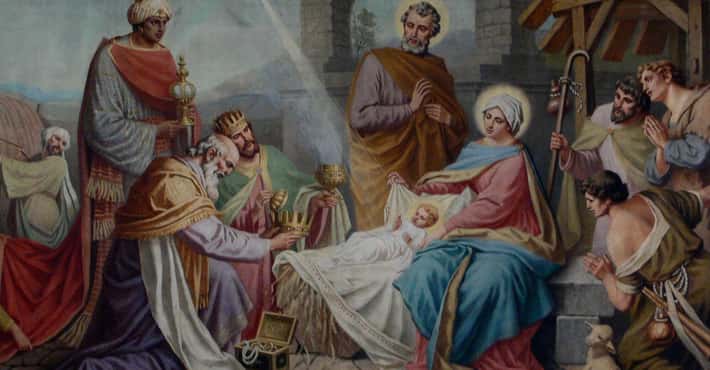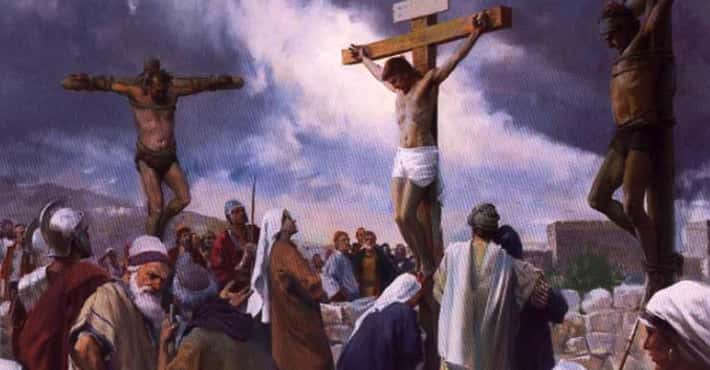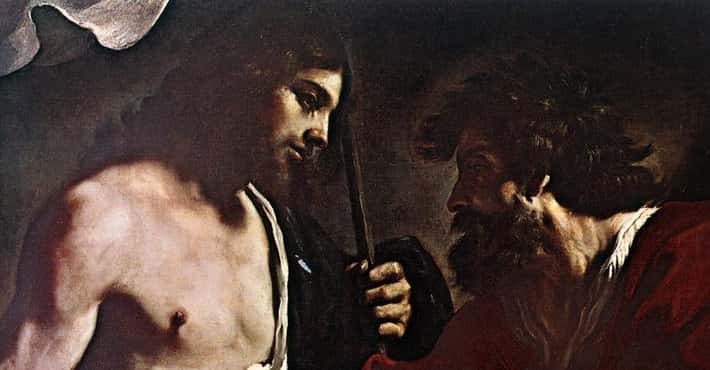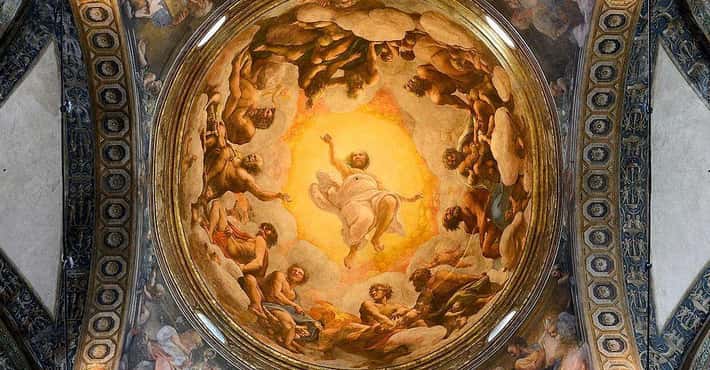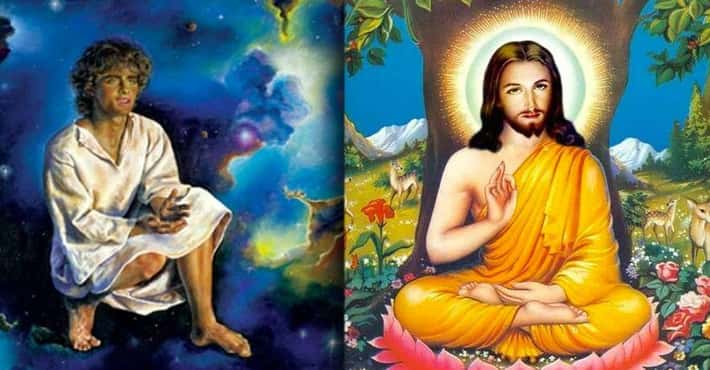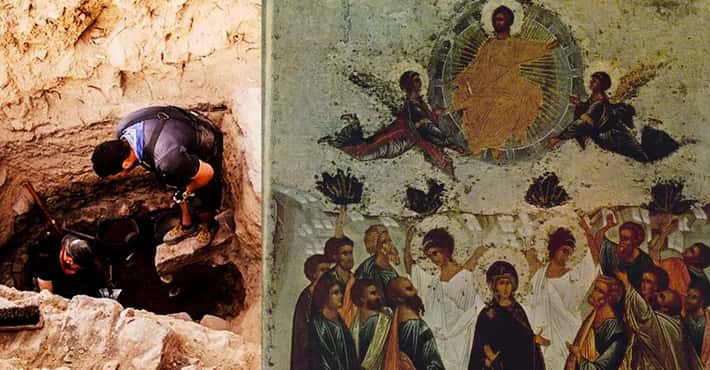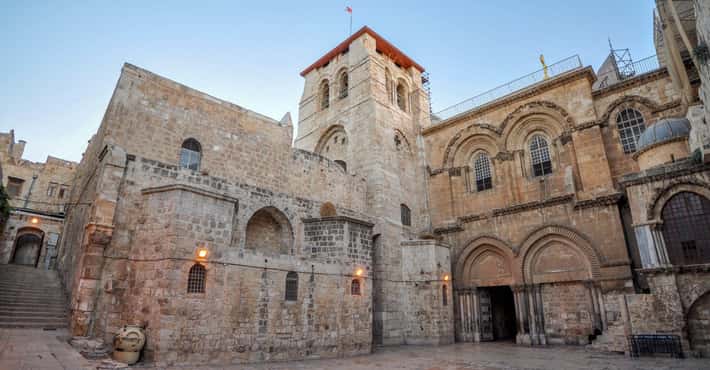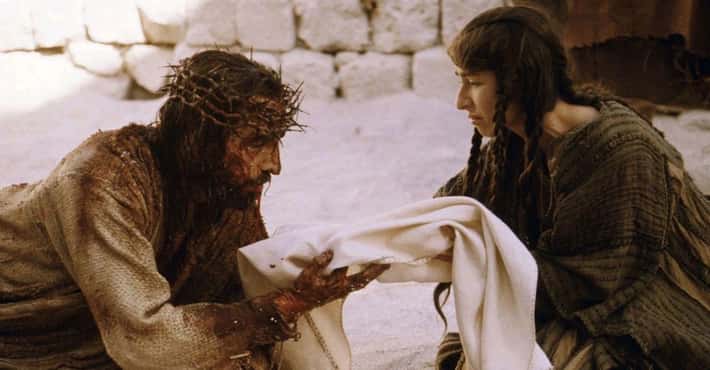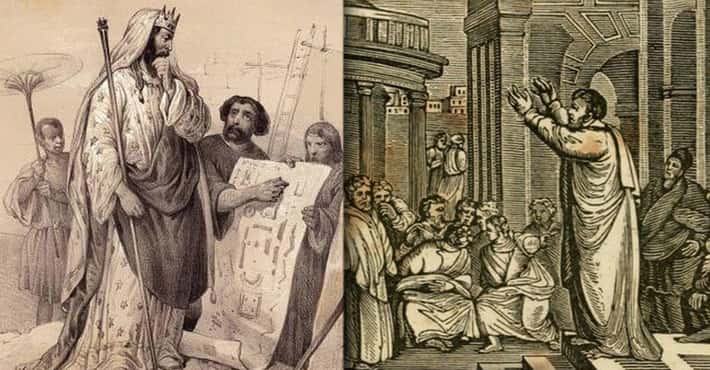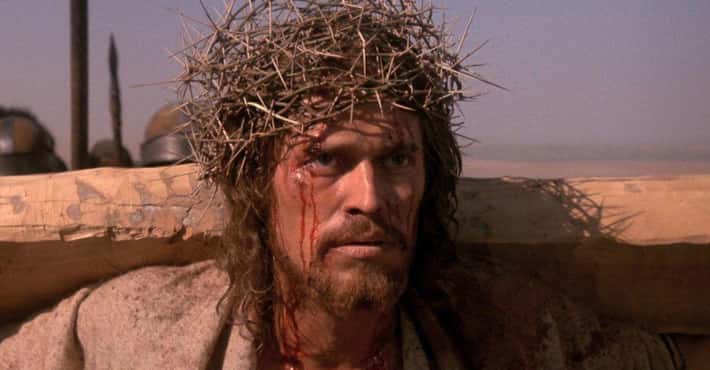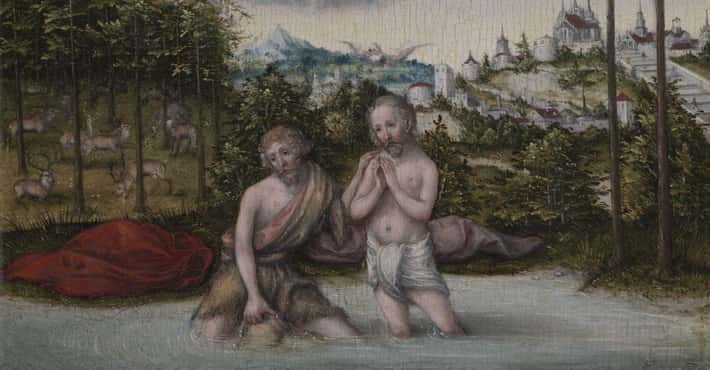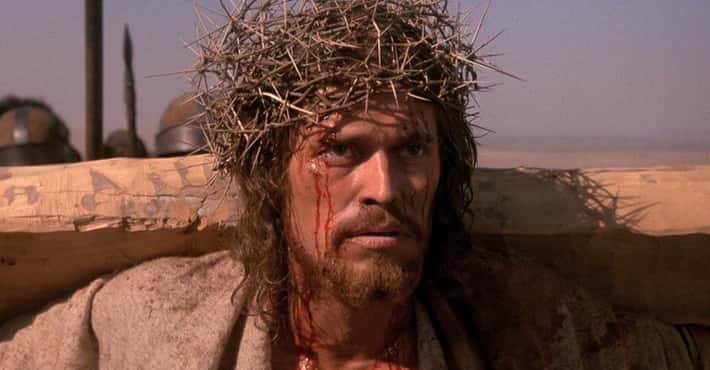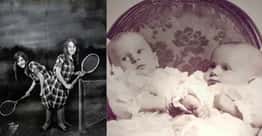Our Modern Image Of Jesus Might Be Based On A 15th-Century Murderer
- Photo: Altobello Melone / WikiMedia Commons / Public Domain
According To The Theory, The Borgia Portrait Was Created By The Catholic Church During The Crusades
According to the theory, Jesus was largely portrayed as a Middle Eastern figure prior to the crusades. During the crusades, European invaders were hesitant to kill enemies that resembled their savior. The Catholic church sought out a new face to use as the standard depiction of Jesus, settling upon the conventionally handsome face of Cesare Borgia.
- Photo: Giuseppe Lorenzo Gatteri / WikiMedia Commons / Public Domain
Borgia Was The Son Of A Controversial Pope
Borgia caused scandal simply by being born, as he was the illegitimate son of Pope Alexander VI. Many online sources spreading the Borgia-as-Jesus theory state Pope Alexander VI was a ruthless and corrupt criminal, but this reputation is somewhat undeserved. He was a controversial pope and the backlash against his practices led in part to the Protestant Reformation. However, Pope Alexander VI was not a dictator or criminal as frequently described both online and by bitter contemporaries.
- Photo: Bartolomeo Veneto / WikiMedia Commons / Public Domain
Borgia May Have Murdered His Own Brother And Slept With His Sister
As there was so much propaganda circulating throughout his reign, it’s hard to separate fact from fiction when it comes to Cesare Borgia. One of the most prevalent rumors during Borgia's time was that he murdered his younger brother Juan. Cesare was allegedly extremely jealous of his brother and – when Juan was murdered in 1497 under mysterious circumstances – there was speculation Cesare covertly carried out the attack.
However, not all historians buy this narrative. Papal states, as well as other Italian states, felt threatened by Borgia’s rise to power and disagreed with some of his military and leadership tactics. Anti-Cesare propaganda became commonplace, so the alleged murder may have been part of a smear campaign.
This isn't the only rumor that sticks to Cesare's reputation like glue; for centuries there has been speculation of an inter-familial relationship between Cesare and his sister, Lucrezia Borgia. Lucrezia's reputation is nearly as infamous at Cesare's, and to this day it's impossible to have a truly clear idea of what their relationship was really like.
- Photo: Andrea del Verrocchio / WikiMedia Commons / Public Domain
Leonardo da Vinci May Have Popularized The Image
If the theory is correct, another reason Borgia was chosen as the face of Christ was due to Borgia's alleged friendship with Leonardo da Vinci. Da Vinci majorly contributed to the modern image of a Caucasian version of Christ via his paintings. Some think da Vinci modeled the image off of his friend Borgia.
Some theories take it even further. There was speculation about Borgia’s possible bisexuality throughout his lifetime that has persisted to the present day. This has led to some rumors that Borgia and da Vinci were actually lovers and da Vinci modeled Christ off his partner as a romantic gesture.
- Photo: YAHAWASHI IS COMING BACK! / YouTube
We Have No Idea What Jesus Actually Looked Like
Part of the reason rumors like the Cesare Borgia story can take off is that we have no idea what Jesus actually looked like, meaning it’s not impossible that his likeness could be based on a random historical figure. There are no physical artifacts proving the existence of Jesus nor are there any portraits or physical descriptions from historians or scholars of Jesus's era. The gospel provides zero details regarding what Jesus looked like, so portraits of Christ were largely constructed without factual guidance.
- Photo: Niccolò Machiavelli / WikiMedia Commons / Public Domain
Borgia Inspired Machiavelli's Prince
Borgia’s actions caught the attention of philosopher, historian, and writer Niccolo Machiavelli. Machiavelli admired Borgia’s ruthlessness and calculated ability to rule via administration rather than facing battles himself. In fact, Borgia was the inspiration for Machiavelli’s The Prince, the novel famous for the popularizing the mentality, “The ends justify the means.” This is certainly a far stretch from Jesus’s message of love, forgiveness, and turning the other cheek.
- Photo: Andreas Wahra / WikiMedia Commons / CC BY-SA 3.0
Images Of A Caucasian Jesus Predate Borgia's Time
One major blow to the theory’s credibility is that depictions of Jesus resembling Borgia predate Borgia’s life. While pictures of Jesus certainly became more commonplace during Borgia’s era, there were portraits of Christ throughout the middle ages and early Renaissance. One of the more famous depictions of Jesus, in Giotto di Bondone’s The Lamentation of Christ, depicts Jesus as longhaired, handsome, and white. There are physical similarities between this image and Borgia, and the painting was made in 1305. Borgia is believed to have been born in 1475 or 1476.
- Photo: Carl Bloch / WikiMedia Commons / Public Domain
Snopes Doesn't Buy The Story
While the Cesare Borgia theory is interesting, the popular online website Snopes lists the story as “false.” Snopes is a site dedicated to fact-checking urban legends and rumors, particularly those circulated online. Snopes points out online encyclopedias that present the story as fact do not draw from reputable sources. Snopes also asserts there is no real evidence to support the theory beyond a passing resemblance between Borgia and Jesus. Nevertheless, this has not done much to quell the curiosity of online sleuths and the Jesus-as-Borgia theory continues to be a popular source of debate.
- Photo: John Collier / WikiMeida Commons / Public Domain
Borgia May Have Been Responsible For Multiple Assassinations, Including The Murder Of His Own Brother-In-Law
Part of the reason people find the Cesare Borgia theory so disturbing is that Borgia’s violent military tactics and disreputable love life clash with the peaceful image of Jesus. Historical accounts are a little murky, so it can be hard to separate fact from fiction, but numerous political assassinations were attributed to Borgia during his time. While it’s unclear how many people Borgia killed, it’s generally considered historical fact that he orchestrated the murder of his brother-in-law Alfonso. His motivations are unclear, but scholars believe this was an act of personal vengeance rather than a politically-motivated act.
- Photo: Gerard van Honthorst / WikiMedia Commons / Public Domain
Jesus Was Originally Described As Homely
Cesare Borgia’s conventional good looks are often cited as a reason he was used as the model for a modern Christ. Prior to modern depictions, Jesus was rarely depicted at all as drawings and representations of prophets were considered graven images. Jesus was often shown via pictograms, appearing as symbolic images like a fish, an anchor, or a peacock. When Jesus was described in text, he was said to be plain and sometimes outright unattractive.


